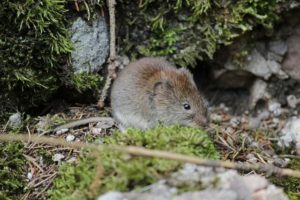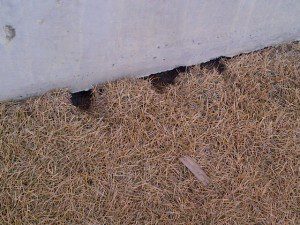Vole Yard Damage Solutions: Effective Control Methods
Vole Yard Damage Solutions: Effective Control Methods
Blog Article
Comprehensive Overview to Reliable Vole Bug Control: Invasion Identification and Therapy Techniques
In the world of reliable parasite control, vole problems posture an unique difficulty that requires a critical strategy. By checking out the subtleties of vole actions, understanding key indicators of infestation, and reviewing a range of control choices, one can establish a detailed strategy to combat these elusive parasites.
Comprehending Vole Behavior
Vole actions is identified by their delving routines and fast reproduction prices, making them a challenging bug to control effectively. These tiny rats normally create elaborate passage systems underground, utilizing them for sanctuary, food storage space, and transportation. Voles are herbivores, eating a variety of plants, turfs, origins, and bulbs, which can trigger substantial damage to gardens, orchards, and lawns. Their quick reproductive price additional complicates control initiatives, with females efficient in producing multiple clutters in a solitary year, each having several children.
Voles are most active throughout the morning and evening hours, investing most of their time foraging for food. Their burrowing habits not only disturb yards and grass yet also make them challenging to spot and eliminate. Understanding vole habits is important for effective parasite control methods. By identifying their burrow locations, keeping an eye on feeding areas, and applying targeted control methods, such as capturing or environment adjustment, vole infestations can be managed effectively.
Indicators of Vole Invasion

Prevention Methods
Executing efficient avoidance strategies is crucial in lessening vole infestations and protecting vegetation from their devastating feeding routines (vole pest control). To prevent vole invasions, it is necessary to start by getting rid of prospective food sources and sanctuary. Maintain yard and vegetation trimmed short, eliminate weeds and particles, and preserve a neat yard or lawn to make the area much less eye-catching to voles. Installing obstacles such as equipment towel or underground secure fencing can additionally aid hinder voles from entering details areas. Additionally, minimizing excess dampness by repairing leaky pipelines and ensuring appropriate drain can make the setting less hospitable for voles.
On a regular basis examining the building for indications of vole activity, such as runways and tunnel openings, is essential for very early detection and prompt activity. If vole activity is suspected, think about utilizing repellents or catches tactically positioned near their paths.
Non-Lethal Control Approaches
To efficiently take care of vole populations while prioritizing gentle methods, non-lethal control techniques offer useful solutions for lowering vole damages in landscapes and yards. These obstacles can be hidden at the very click for more info least 12 inches deep and bent at a 90-degree angle to prevent voles from burrowing below.

Lethal Control Options
One efficient approach for dealing with vole invasions in yards and landscapes involves the critical use of lethal control alternatives. When encountered with a severe vole invasion that non-lethal approaches have failed to consist of, implementing dangerous control actions becomes essential. On the whole, when utilizing lethal control choices, it is necessary to do so responsibly and in accordance with regional policies to effectively take care of vole problems.
Final Thought
To conclude, effective vole pest control requires a detailed understanding of vole behavior, recognition of indicators of problem, application of avoidance strategies, and application of both deadly and non-lethal control methods. By integrating these approaches, individuals can successfully take care of vole populations and secure their building from damage. It is necessary to attend to vole problems quickly to avoid more concerns and reduce the influence on the surrounding atmosphere.
Provided the detailed tunnel systems and quick reproduction prices characteristic of voles, recognizing the signs of vole infestation becomes vital in effective parasite control. One of the key signs of vole existence is the existence of surface area paths or trails in lawn or snow, typically about 1-2 inches vast, produced as voles take a trip in between their burrows and food sources.To properly manage vole populaces while focusing on humane techniques, non-lethal control techniques provide functional options for reducing vole damage in landscapes and yards.One efficient approach for addressing vole invasions in yards and landscapes entails the tactical usage of dangerous control options. vole pest control.In final thought, effective vole pest control needs a thorough understanding of vole actions, recognition of have a peek at this site indications of invasion, implementation of prevention approaches, and use of both deadly and non-lethal control techniques
Report this page